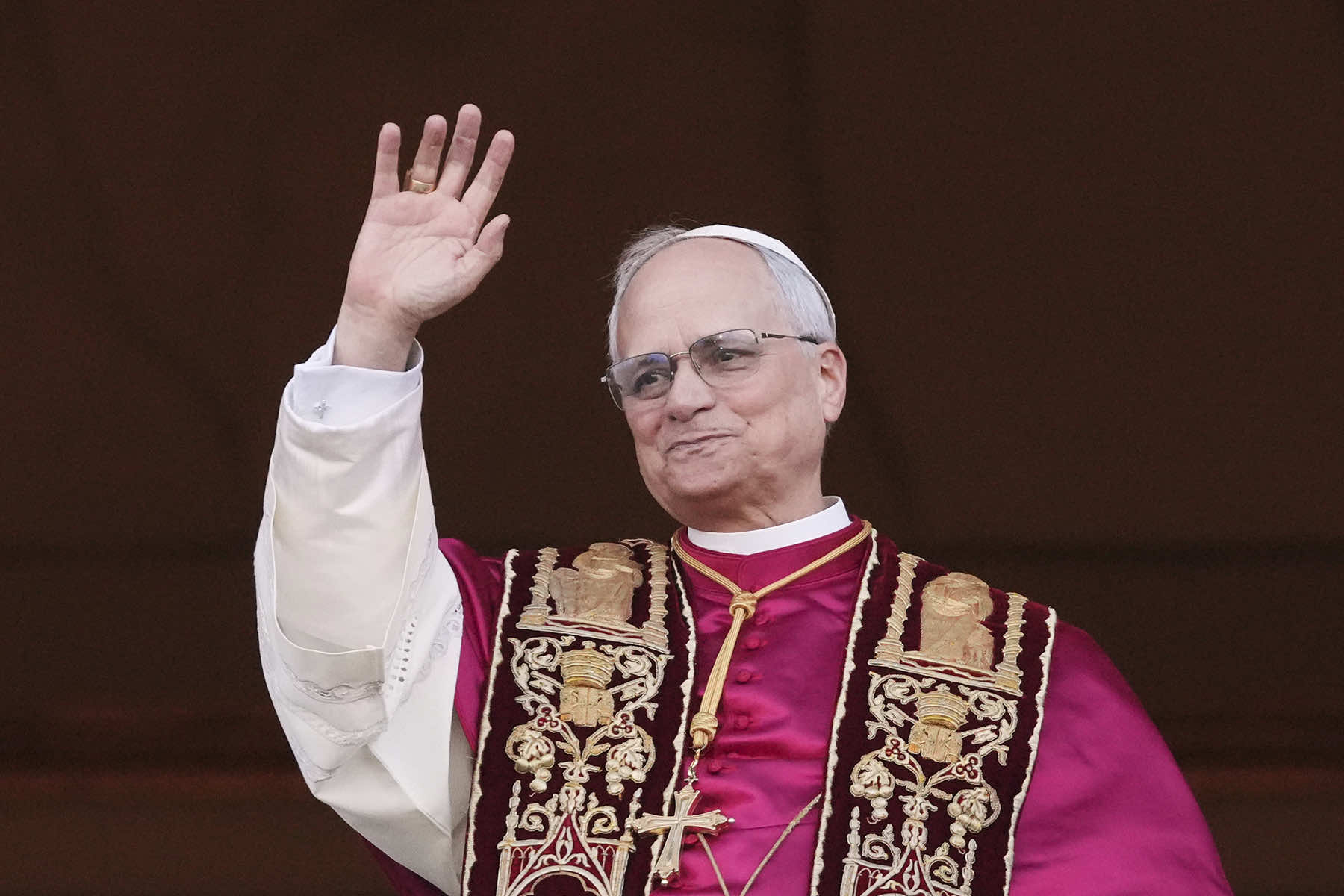Robert Francis Prevost Elected as the 267th Pontiff: A New Chapter for the Catholic Church
On a crisp spring morning in Rome, the College of Cardinals convened within the hallowed walls of the Sistine Chapel to elect the 267th Bishop of Rome. After successive ballots, the conclave emerged with a decision that will resonate through history: Robert Francis Prevost, until now Prefect of the Dicastery for Bishops, was chosen to succeed Pope Francis. Taking the regnal name Leo XIV, Cardinal Prevost’s elevation marks several notable firsts and has stirred both jubilation and theological reflection among the global Catholic community.
A Historic Election: First American Pope from North America
Born in Chicago to immigrant parents, Robert Francis Prevost’s roots in the United States immediately capture public attention. While Pope Francis of Argentina is often celebrated as the first pontiff from the Americas, Cardinal Prevost’s election as Leo XIV underscores the growing prominence of the Church in North America. His American upbringing and pastoral experience in diverse dioceses equip him with unique insights into issues such as religious pluralism, social justice, and the pastoral care of migrants.
-
Early Life and Formation
-
Prevost was born in 1953 in the Archdiocese of Chicago, where he attended Catholic schools and later entered seminary.
-
Ordained to the priesthood in the early 1980s, he served as a parish priest before earning advanced degrees in canon law and theology.
-
His academic background and administrative skills led to appointments in the Vatican’s diplomatic service and, eventually, leadership roles within the Roman Curia.
-
-
Curial Career and Episcopal Ministry
-
As Prefect of the Dicastery for Bishops, Cardinal Prevost has overseen the selection and formation of bishops worldwide, emphasizing pastoral sensitivity and cultural awareness.
-
He has been recognized for fostering dialogue between different rites within the Catholic Church and promoting evangelization in secularized societies.
-
-
Choosing the Name Leo XIV
-
By selecting the name Leo, Prevost aligns himself with a papal tradition of strong leadership and doctrinal clarity. The name recalls Pope Leo I, renowned for defending the Church against heresy, and Leo XIII, noted for his social encyclicals.
-
Renewed Hopes and Continuity of Vision
Catholics around the world greeted the announcement with chants of “Viva il Papa!”—an affirmation of both respect and affection. Many commentators note that Leo XIV’s theological and pastoral priorities mirror those of his predecessor, Pope Francis:
-
Preferential Option for the Poor
Leo XIV has consistently emphasized solidarity with marginalized communities. His pastoral letters as bishop in border dioceses highlighted the dignity of migrants and the moral imperative to offer assistance. -
Care for Creation
Building on Laudato si’, the landmark environmental encyclical of Pope Francis, Leo XIV has pledged to champion ecological stewardship, endorsing concrete measures to reduce the Church’s carbon footprint and promote sustainable development in partnership with faith-based organizations. -
Synodality and Collegiality
In keeping with the synodal process initiated by Pope Francis, Leo XIV has affirmed the value of consultation and collaboration among bishops, religious orders, and lay faithful, seeking a more inclusive model of governance. -
Interfaith and Ecumenical Engagement
Prevost’s diplomatic background has prepared him for continued dialogue with other Christian denominations and world religions, fostering mutual understanding on issues such as religious freedom and humanitarian crisis response.
The Prophecy of the Popes: Legend Versus Doctrine
Amid celebrations of Leo XIV’s election, an age-old prophecy has once again surfaced in public discourse: the Prophecy of the Popes, traditionally attributed to St. Malachy, a 12th-century Irish archbishop. According to legend, St. Malachy foresaw a succession of 112 future pontiffs, concluding with a figure described cryptically as “Peter the Roman.”
Origins and Content of the Malachy Prophecy
-
Historical Context
The prophecy first appeared in written form in the late 16th century, several centuries after St. Malachy’s lifetime. Its authenticity has long been a matter of scholarly debate. -
Structure of the Prophecy
Each pope is represented by a brief Latin motto—often allegorical or symbolic rather than a proper name (e.g., “Rusticus Excalceatus,” “Rose of Umbria”). -
The Final Pope: “Peter the Roman”
According to the prophecy, the last in the line will preside during “the city of seven hills [Rome]… will be destroyed, and the dreadful judge will judge his people.”
Scholarly and Theological Assessments
-
Forgery or Authentic Vision?
Many historians, including Professor Joëlle Rollo-Koster of medieval studies, point to the lack of any manuscript evidence predating the late 1500s, suggesting the document is a post-factum creation rather than a genuine Malachy relic. -
Episcopal Perspectives
In 2013, Josh Canning, director of the Newman Centre in Toronto, dismissed any connection between Pope Francis and “Peter the Roman.” He and other theologians caution against literalist readings that conflate symbolic verse with concrete prophecy. -
Canon Law and Church Teaching
The Vatican has never officially endorsed the Prophecy of the Popes. Church authorities typically regard private revelations and prophecies with caution, emphasizing the sufficiency of Scripture and the Church’s magisterial teaching.
Why the Prophecy Persists
Despite scholarly refutation, the Malachy prophecy endures in popular imagination for several reasons:
-
Human Fascination with Mysteries
Prophecies tap into a universal desire to peer behind the veil of the future, especially at moments of transition, such as the election of a new pope. -
Media Sensationalism
Headlines linking Pope Leo XIV to the apocalyptic “Peter the Roman” motif draw clicks and engagement, fueling viral sharing—even when lacking factual basis. -
Cultural Memory and Tradition
Legends from medieval Europe often survive through repetition, woven into the tapestry of ecclesiastical folklore, regardless of their historical veracity.
Implications for the New Papacy
While the Malachy prophecy may capture headlines, the real challenges facing Leo XIV are both urgent and concrete:
-
Global Church Governance
Managing the diverse needs of a 1.3 billion-member Church across varied cultural contexts, from rapidly growing communities in Africa and Asia to secularized societies in Europe and North America. -
Addressing Clergy Shortages and Vocations
Encouraging priestly and religious vocations in regions experiencing decline, while supporting the formation and well-being of clergy worldwide. -
Strengthening Social Outreach
Expanding the Church’s charitable networks to confront poverty, displacement, and public health crises, in partnership with governmental and non-governmental organizations. -
Navigating Geopolitical Tensions
Leveraging the Vatican’s diplomatic role to advocate for peace and religious freedom, from conflict zones in the Middle East to areas affected by authoritarian governance. -
Continuing Synodal Conversations
Implementing the recommendations of recent synods on topics such as youth engagement, the role of women in the Church, and pastoral care for families and LGBTQ persons.
A New Beginning, Not an End
Amid speculation about mystical prophecies, the election of Pope Leo XIV ultimately represents continuity and renewal within the Catholic tradition. Rather than heralding a cataclysmic finale, his pontificate is beginning as a bridge between the reforms of Pope Francis and the evolving needs of a global Church.
-
A Pastor at Heart
Prevost’s commitment to the marginalized, informed by decades of pastoral ministry, offers hope for renewed outreach. -
An Administrator by Calling
His curial experience equips him to navigate the complex bureaucracy of the Holy See, promoting transparency and accountability. -
A Son of the Americas
As the first North American pope, Leo XIV embodies the demographic and cultural shifts reshaping Catholicism in the 21st century.
Conclusion
The selection of Pope Leo XIV marks a moment of profound significance for Catholics worldwide. His election as the first American pontiff from North America signals the Church’s global reach and the vital role of the Americas in shaping its future. While the Prophecy of the Popes may continue to captivate imagination, the real work of the papacy unfolds in daily acts of pastoral care, doctrinal guidance, and social engagement.
As Leo XIV steps onto the balcony of St. Peter’s Basilica to impart his first blessing, the faithful look forward not to an apocalyptic finale, but to a renewed era of hope, dialogue, and compassion—guided by a shepherd called to serve in tumultuous times.

Sophia Rivers is an experienced News Content Editor with a sharp eye for detail and a passion for delivering accurate and engaging news stories. At TheArchivists, she specializes in curating, editing, and presenting news content that informs and resonates with a global audience.
Sophia holds a degree in Journalism from the University of Toronto, where she developed her skills in news reporting, media ethics, and digital journalism. Her expertise lies in identifying key stories, crafting compelling narratives, and ensuring journalistic integrity in every piece she edits.
Known for her precision and dedication to the truth, Sophia thrives in the fast-paced world of news editing. At TheArchivists, she focuses on producing high-quality news content that keeps readers informed while maintaining a balanced and insightful perspective.
With a commitment to delivering impactful journalism, Sophia is passionate about bringing clarity to complex issues and amplifying voices that matter. Her work reflects her belief in the power of news to shape conversations and inspire change.
